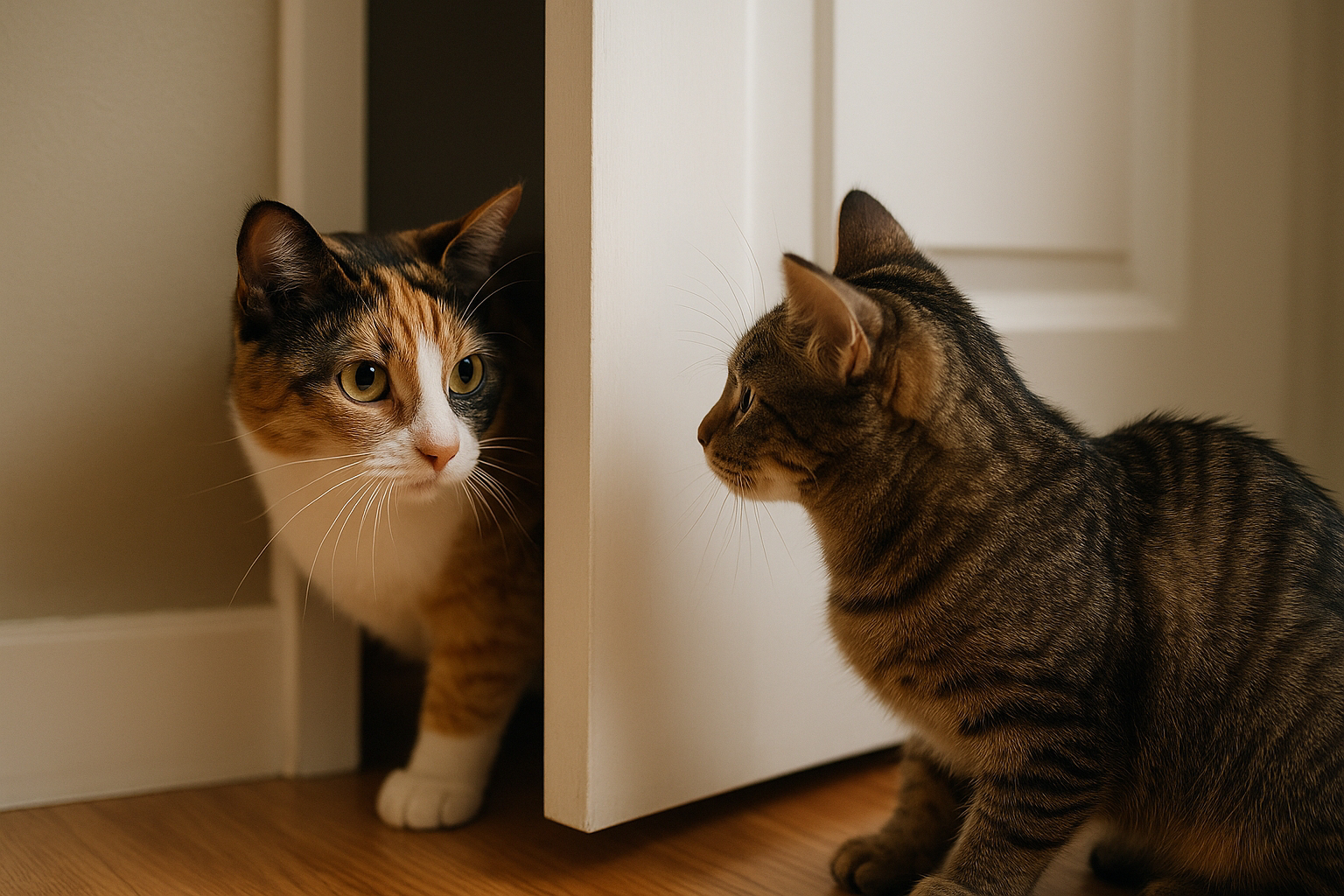Understanding why cats scratch is the first step toward protecting your furniture and giving your cat what they need. With the right tools, redirection, and a little patience, you can live in harmony with your cat’s claws without feeling like you’re losing the battle against destruction.
Why Do Cats Scratch?
Scratching serves several important functions for cats. It’s not just about keeping their claws sharp—it’s about their physical and emotional health, too.
-
Claw Maintenance
Cats’ claws naturally grow in layers. Scratching helps shed the outer layers, keeping the claws sharp, clean, and healthy. Without scratching, cats’ claws could become overgrown or split. -
Muscle Stretching
When cats dig in with their claws and pull down or back, they stretch the muscles in their shoulders, back, and legs. It’s their version of a yoga session! -
Territory Marking
Cats have scent glands in their paws. When they scratch, they leave both a visual mark and a scent mark behind, telling other cats: “This space is mine.” -
Stress Relief
Scratching is also emotional. Cats scratch more when they’re excited, stressed, or seeking comfort. You might notice your cat scratch after you come home from work—it’s their way of releasing pent-up energy and emotion.
Why Cats Scratch Furniture (Instead of Scratchers)
If scratching is so natural, why does it always seem to happen on couches, door frames, and rugs instead of those scratching posts you so carefully bought? The answer usually comes down to three things: location, texture, and size.
- Location: Cats want to scratch where they spend their time. A lonely scratching post tucked in the basement won’t get much use.
- Texture: Cats prefer sturdy, shreddable materials. Upholstery, sisal rope, and cardboard are favorites. If the scratching post doesn’t feel good under their claws, they won’t use it.
- Size and Stability: Cats like to stretch full length when they scratch. If a post is too short or wobbly, they’ll head for a solid couch instead.
How to Redirect Scratching Behavior
The good news is that you can teach your cat to scratch acceptable surfaces instead of your furniture. It takes a mix of providing alternatives, discouraging bad habits, and rewarding good ones.
1. Provide the Right Scratchers
Not all scratching posts are created equal. To keep your cat satisfied, offer:
- Tall posts (at least 30 inches) so your cat can stretch fully.
- Sturdy bases that won’t tip over.
- Variety in textures like sisal rope, carpet, and corrugated cardboard.
- Horizontal options like flat cardboard scratchers for cats who prefer scratching rugs or floors.
2. Location, Location, Location
Place scratchers where your cat already scratches. If they target the arm of the couch, put a post right next to it. Over time, you can gradually move the scratcher a little further away if desired.
3. Make Scratchers Irresistible
Encourage use by:
- Sprinkling catnip or silvervine on the post.
- Using interactive play near the scratcher with wand toys to get your cat climbing and scratching.
- Rewarding your cat with treats, praise, or petting when they use the scratcher.
4. Discourage Furniture Scratching (Gently)
Cats don’t respond well to punishment, but you can make furniture less appealing by:
- Covering areas with double-sided tape or furniture protectors—cats dislike sticky surfaces.
- Using deterrent sprays that are safe for fabric but unappealing to cats.
- Blocking access temporarily with throws, slipcovers, or moving furniture around.
5. Regular Nail Trimming
Keeping your cat’s nails trimmed helps reduce the damage from scratching. Aim to trim every 2–3 weeks, or ask your vet or groomer for help if you’re unsure how.
What Not to Do
Some methods may seem like quick fixes but can actually harm your cat’s health or well-being:
- Declawing – This is not a nail trim; it’s a painful amputation of the last bone in each toe. Declawed cats often develop behavioral problems and chronic pain. It’s banned in many countries and considered inhumane.
- Yelling or Punishing – Cats don’t connect punishment with their scratching. It will only cause fear and stress.
- Removing All Scratch Surfaces – Scratching is instinctive. If cats don’t have acceptable outlets, they’ll always find a substitute (usually your furniture).
Special Cases – When Scratching Becomes Excessive
Most cats scratch moderately, but if your cat is scratching excessively or obsessively, it could be a sign of:
- Stress or Anxiety – Changes in the home, new pets, or lack of stimulation can cause stress scratching.
- Territorial Disputes – Multi-cat households may see more scratching as cats mark territory.
- Medical Issues – Arthritis or paw pain can change how and where a cat scratches.
If you suspect stress or medical problems, consult your veterinarian or a feline behaviorist.
Living in Harmony With Your Cat’s Claws
Scratching is a normal, healthy behavior, and it’s not something to “fix” but to manage and redirect. By providing attractive alternatives, trimming nails, and gently discouraging damage to your furniture, you’ll protect your home and give your cat what they need.
Think of it this way: when your cat scratches, they’re not trying to misbehave—they’re just being a cat. With the right tools and training, you can channel that natural instinct into acceptable outlets and strengthen the bond you share.
Final Thoughts
Cats will always scratch—it’s part of who they are. Instead of fighting it, work with it. Provide good scratching posts, reward the right behavior, and protect your furniture in smart ways. With a little patience, you’ll discover that scratching doesn’t have to be a source of frustration—it can even become a source of joy when you see your cat happily stretching and scratching on the post you picked just for them.
Because at the end of the day, a scratched-up scratching post is a badge of success—it means your cat is healthy, happy, and thriving.



